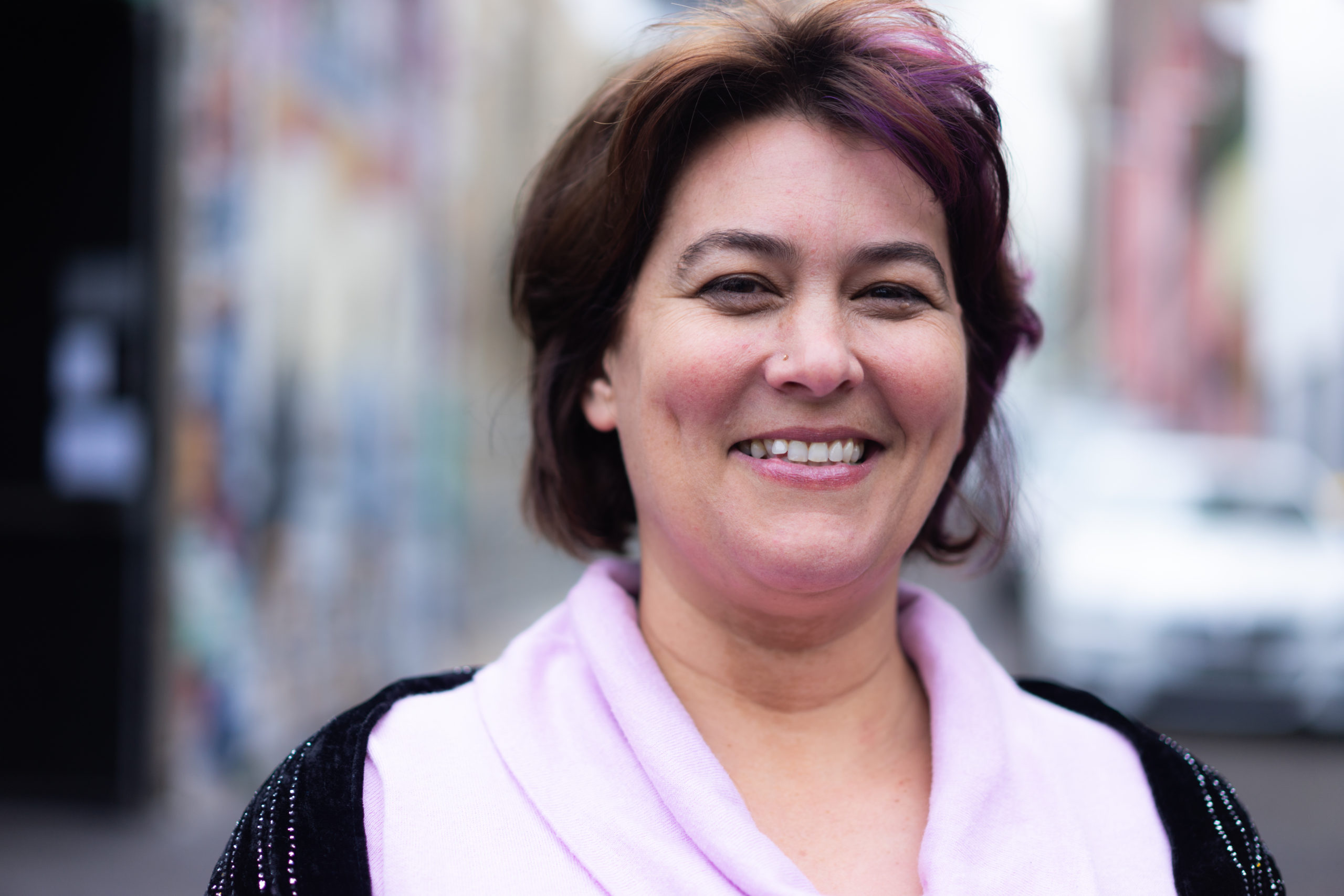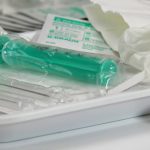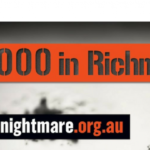“A Local Solution to a Local Problem”: An Interview With Uniting MSIC’s Dr Marianne Jauncey

UNSW criminology lecturer Dr George Dertadian released his findings last week from a study that utilised national coronial overdose death data, which pointed to southwestern Sydney as an ideal candidate for a second safe injecting facility.
Dertadian found that between 2006 and 2015 there were 373 overdose deaths in four southwestern local government areas. And he added that Liverpool was the most likely location, although there are mixed reactions from residents and opposition from local businesses and politicians.
This follows state deputy coroner Harriet Grahame recommending NSW Health conduct a study into whether it’s feasible to introduce a supervised injecting space around Liverpool Hospital. While NSW ice inquiry lawyers have suggested setting up more supervised drug consumption rooms.
But, this is not the first time suggestions for a second supervised injecting facility in the city’s west have been forthcoming. And the doctor overseeing the running of the Kings Cross safe injecting centre cautions that calls for a such centre must also be coming from the local community.
Saving lives
The Uniting Medically Supervised Injecting Centre (MSIC) first opened its door in May 2001. And over that time, staff at the centre have dealt with over 8,500 overdoses, without one person falling victim to what they’d taken.
The Kings Cross MSIC was the first of its kind in the English-speaking world. In its initial ten years, it resulted in ambulance callouts in the local area dropping by 80 percent, while reports of public injecting and the amount of discarded equipment had halved.
The much warned about honey pot effect never occurred, as there was no mass migration of people who use drugs into the local area. And while public overdoses decreased, and drug offences didn’t increase, property and robbery offences went down.
No one suggests that the issue of drugs in the Cross has disappeared. But, no one with a local understanding will hesitate in saying that residents and local businesses are glad the centre was installed. And the extent of the drug issues in Kings Cross at the turn of the century has subsided.
An expert on harm reduction
Dr Marianne Jauncey has been the medical director of the Uniting MSIC since 2008. And she brings a keen understanding to the issues surrounding these types of facilities, including the positive aspects they bring to local areas, as well as the negative misconceptions surrounding them.
The doctor also points to the not so obvious impacts of the safe injecting centre, such as engaging with a highly marginalised section of the community – who are often homeless or dealing with mental illness – and would otherwise not come into contact with medical professionals.
Sydney Criminal Lawyers spoke to Dr Jauncey about her view of recent suggestions regarding Liverpool as a site for an injecting facility, how MSICs act as gateways to other services, and why she thinks it’s high time that NSW holds a second drug summit

Firstly, there have been renewed calls for a second safe injecting facility in western Sydney. Liverpool has been suggested as a second site. Dr Jauncey, what do you think about this push for such a facility?
It’s a case where those that just look at evidence, will be guided by what the evidence says. And then we have to acknowledge that there’s the real world.
Obviously, drug policy isn’t an area where evidence trumps politics. And that’s not the only kind of area of contention, where there’s debate about both the problem and the solution.
But, I’m a firm believer that we do have to live in the real world, and it isn’t enough to just say it’s needed. We need to understand the concerns of the public. And we need to understand the concerns of the local community.
I would certainly never sail in from Darlinghurst and suggest what should happen in an area where I don’t live, work or understand.
The local community should be driving a response to their own concerns and issues. That was certainly the case in Kings Cross. It’s one of the reasons it has been such a success. It’s not a service that was in anyway imposed on the local community.
It was requested – actually begged for – by the local community, as they were the ones that were having to deal with the reality of public drug use, public drug overdose, multiple ambulance callouts and deaths.
It’s tricky, because as much as we’d like to say that people should be guided by evidence, in the real world, that’s not the way human beings work. And in health policy, generally, it’s not the way the world works.
So, we have to be realistic and acknowledge that there are concerns and fears: some of them founded, and some of them not.
But, nobody wants to feel that they’re having anything pushed on them, and neither should anyone be doing the pushing.
As you’ve just mentioned, there has been reported opposition to the suggestion that a safe injecting centre be set up in Liverpool coming mainly from local businesses and politicians.
There were concerns in Kings Cross as well. What would you say to people who have concerns about a second facility based on the experience of those in the area surrounding the Uniting facility?
The first point is to try and understand where people’s concerns are coming from and find out what it is they find distressing: whether that be the impact on their business or to do with their walk to work.
So, understanding what those problems are, because it may be that a supervised injecting facility can actually be part of the solution. That’s come from my experience of sitting down with businesses in Kings Cross.
But, it’s also being realistic and saying, “This is not a silver bullet.” The medically supervised injecting centre in Kings Cross never suggested that we would magically or radically completely fix a very complex long-term chronic problem that’s been going on in the society since time immemorial.
What we can do is be one part of the solution, and work with local services. What I can say to people is that the majority of local businesses in Kings Cross now actively support the ongoing operation of the centre.
When we speak to them and ask why, their responses are that public needle litter has decreased, the amount of public drug use has decreased, the number of times that ambulances have been roaring up and down the streets and disturbing the peace and quiet has decreased.
But, has it made everything disappear and be better? No. But, the overall direct feedback on the ground is that it’s better than it was. It’s not perfect, but it’s better than it was.
The other thing is that not all models of service delivery have to be exactly what happened in Kings Cross.
It’s essential for the local services that are potentially interested or willing to engage in this debate to see whether or not it might work to really understand the nuances and the nitty gritty of the problem.
For Kings Cross, it was a very concentrated problem around a number of blocks within a 200 metre radius. That was where 90 percent of the overdoses in the local area were occurring.
So, what we needed was a big facility that was able to manage a large number of people in order to have an impact and take that public injecting off the street.
Now, it might be in a different setting – where the problems are more dispersed, or it is more of an issue of overdose, rather than public litter, or it is more an issue of public litter than overdose – so you amend and design your service accordingly.
Our design is not the be all and end all, it’s what works here. And what was designed to respond very specifically to the problems that Kings Cross was facing.
We’ve learnt a lot in the 19 years that we’ve been operating. There have been around 100 services around the world that have opened since we did in 2001. And there are different levels of service delivery. There are integrated services. There are standalone services. There are different staffing models.
There is a range of different things that can be factored in to really design something that’s going to best fit the local community. It very much has to be a local solution to a local problem.
In your understanding, why are people pointing towards Liverpool as a proposed location for a second medically supervised injecting centre?
There’s a number of reasons for that. The deputy state coroner handed down a report some weeks ago, and it was in relation to a number of deaths that have occurred in public hospital toilets.
One of those deaths that she specifically investigated was an overdose death. It wasn’t explicitly an overdose. There was a fellow that died, who had a stroke in a public toilet.
One of the issues that the coroner looked at was the public toilets in Liverpool hospital, and the data around how often overdoses are known to occur, the data around the needle syringe problem, the data around ambulance call outs, and the feedback from drug and alcohol services.
This included one person who – because he knew people were using there – was providing clean syringes. He actually followed someone thinking they were going into the toilets, and he managed to save their life, because the fellow had indeed overdosed, and he was able to get to him in time.
So, Liverpool Hospital toilets have been an area of known drug use. And one of the things she investigated was how we could reduce the overdoses – and the deaths and the injuries – and the problems that result from the use of drugs in those public toilets.
Now, there’s all sorts of actions in terms of fancy screening or movement sensors, which are things that could be done in the toilets to try and create some kind of electronic alert, but they’re prohibitively expensive.
There were also some simple suggestions, like cutting the bottom off the doors, so somebody could actually see the feet, which was one of the very practical suggestions made.
But, also, she recommended that they consider a feasibility study into whether or not a small supervised injecting centre in that local area could reduce the impact and the stress on hospital staff.
That was what came out of the coroner’s report. She was looking very much at the public hospital setting, and the available data in terms of in and around Liverpool Hospital.
Some of the other calls have been using similar data, so again overdose data. I’ve not seen the latest overdose data from Liverpool, but my understanding is that we know across the state, and Australia, that overdose deaths have been increasing. They’ve been increasing for more than over a decade.
The ambulance data, and the overdose data, is suggesting that the area around Liverpool and Fairfield has for some time been an area of higher activity in terms of overdoses, both fatal and nonfatal.
So, that would be a very appropriate use of data to try and determine where problematic opiate use is occurring and where you would be likely to have an impact if you were to open a supervised injecting facility.
You’re talking about lives being lost. At the MSIC where you work, you’ve never had an overdose in the two decades that it’s been operating.
Never had an overdose death. Obviously, we’ve definitely had an overdose, because that’s what we manage.
But, that’s right, there’s never been an overdose death. And that’s because if somebody recognises what’s actually going on, knows how to intervene, and has the necessary skills and equipment to do that, it’s absolutely preventable.
It’s a very difficult thing to do when you are having a conversation with a parent who has lost someone, and you have to suggest that if somebody had been present when their son or daughter was overdosing and had naloxone things would have been different.
In some ways, Australia is doing some very great work here. In NSW, we now have the opportunity for people to be able to go and get free naloxone from their pharmacist. It doesn’t need to be on a script, and they don’t need to pay for it. They should be able to get it over the counter.
I would encourage people if they think they’re potentially going to be a witness to an overdose and could intervene and save someone’s life, then they have the capacity to go and get that free medication that’s funded by the Commonwealth at a local pharmacy.
There’s a number of organisations that fund specific training courses for people that want to have some more input on exactly how to best recognise and know what to do, so that they feel skilled and confident. We also provide it and increasingly, NGOs are providing naloxone.
I remember speaking to the first person who described to me what it was like to give naloxone in a situation. And how panicked he was. He was convinced that this person was going to die.
He described kneeling over the person and watching his own sweat drip onto their face, when he was trying to work out how to do mouth-to-mouth.
He had to give multiple doses of naloxone. And he said he had a profound sense of relief when he heard a groan and the person started to open their eyes.
This was a member of the public who saved a life. And obviously, it had an enormous impact on the person whose life was saved. But, it actually had an enormous impact on the person who saved the life as well.
One of the things I reflected on after having talked to this fellow, was how it really gave him a sense of importance and acknowledgement of his own worth. He said he could then identify as not just what society saw him as – “a junkie” – but he was also somebody who’d saved a life.
So, really, it’s basically a great program: to get this lifesaving medicine into the hands of people who are going to be present and can save a life.
I believe that the MSIC also acts as a gateway for people who use drugs to access ways that they can change their lives.
Yeah. There are three or four major objectives of the service. The primary one being to reduce the deaths and injuries associated with drug overdoses. And without question we’re able to do that.
We’ve intervened in more than 8,500 overdoses. There’s never been a person die. All of those overdoses have been reversed. There has never been an overdose death at a supervised facility anywhere in the world.
But, it’s not just a case of stopping people from dying from overdose and then doing nothing else. It’s very much a low threshold service, where we can gradually get to know people over a period of time – develop a sense of trust – and be in a position where we can gently assist them on a different path.
It might be referring them on for some medical treatment or referring them for some dental treatment. It can be assisting them with getting a house, or with legal issues, crisis counselling or drug and alcohol treatment.
So, there’s a range of aspects to their health and overall wellbeing that this service can help assist with. And certainly, one of those is with drug and alcohol treatment. And about half of our referrals are for specific specialist drug and alcohol services.
It’s very much providing leakage into health services and social welfare services that wouldn’t otherwise be happening for that person or would be happening much later down the track.
We’re able to make contact with people earlier than would be happening and develop that therapeutic relationship and refer them into the network of other services that’s available to try and assist them.
And lastly, Dr Jauncey, the Uniting facility in Kings Cross has been operating for almost two decades. It was born out of the 1999 NSW Drug Summit. There was talk of another drug summit last year if Labor had won the state election, but they failed to do so.
You’ve suggested caution in dealing with the idea of a second injecting centre. How do you suggest looking into this proposal should be approached?
The Uniting Church, which runs this service, is also calling for a drug summit. One of the reasons that the original summit worked so well is that it enabled more than just a kneejerk response. Parliament was closed for five days back in 1999.
So, rather than having just a three second grab in the media, and a flash in the pan response, it enabled a lot of people to come together.
They had conversations that would never have otherwise occurred. And it was a time and an opportunity for people to really sit back, ponder and think.
There are some really classic stories of members of parliament who went to the drug summit, and on the last day, stood up and said, “This is the speech I was going to give.” And they then ripped it up, saying that they’d been so profoundly moved and changed by what they’d heard that it had impacted their point of view.
We are at a similar situation now, where there’s a great deal of concern in the community about the drug methamphetamine. Some of that concern is well founded.
What we know about drug and alcohol – and any policy area that’s particularly emotive – is simply quoting a statistic from data doesn’t change people’s minds, because the way we’ve made up our minds is based on emotion.
So, we need the space, time and the opportunity to influence that. And it’s not as simple as providing the evidence.
What a drug summit can do, when it is done well, is to bring all of the key stakeholders together – unlikely groups, like members of the affected community, police, parents, church folk, counsellors and clinicians – to give their own point of view.
When that’s done in a calm and controlled environment it can honestly create the potential for transformational change, which actually allows people to listen and hear, and not just go into this response where they’re fighting – where they’re digging their heels in and saying that their view is right and that of others is wrong.
It is beholden upon all of us to listen to the other side, before we tell them that what we think is right. And a drug summit allows for that.
The Church is calling for a rethink about our whole approach to drugs. The Uniting Church is not only campaigning for an increase in the access to treatment services – because they’re massively underfunded and the people who need treatment can’t get it – but also, it’s calling for a change of the laws.
This would be a change to the situation that creates an environment where there’s so much stigma associated with drug use that people on average are waiting many years before they seek treatment, because of the deep shame associated with problematic drug use.
So, it’s quite extraordinary for someone like me who doesn’t go to church and doesn’t believe in God, to be working for a service who’s really putting their money where their mouth is.
And as a faith-based organisation, they’re calling for an absolute radical rethink, and a drug summit could be one way that we engage everyone in the community so that everybody can feel heard.







